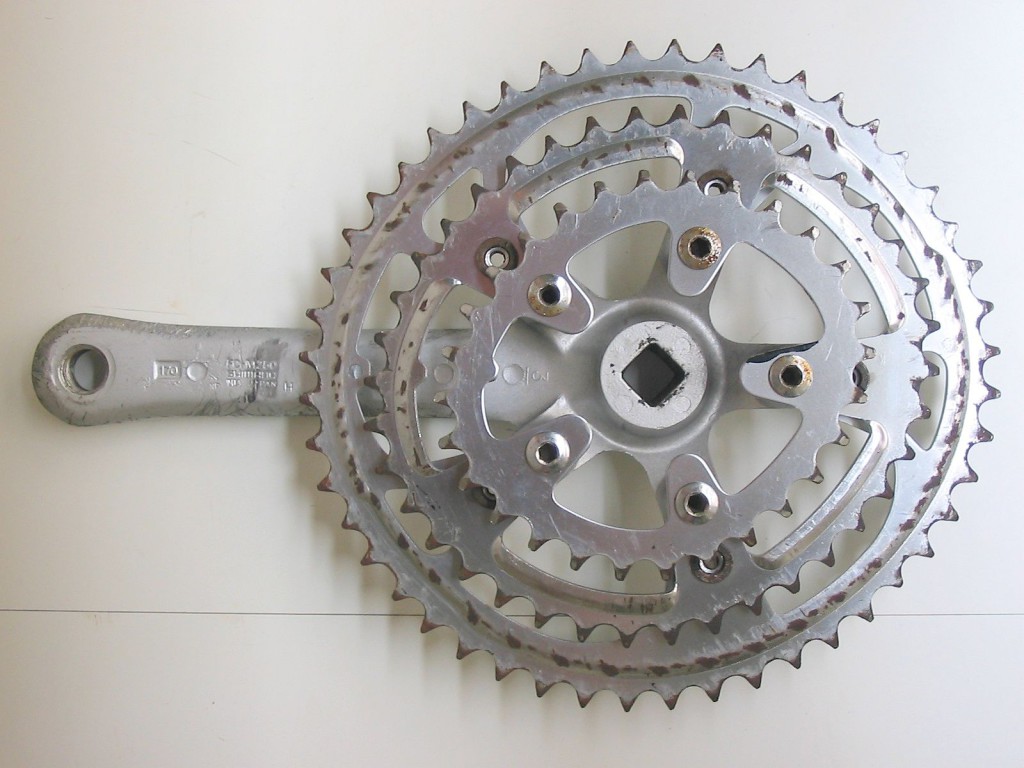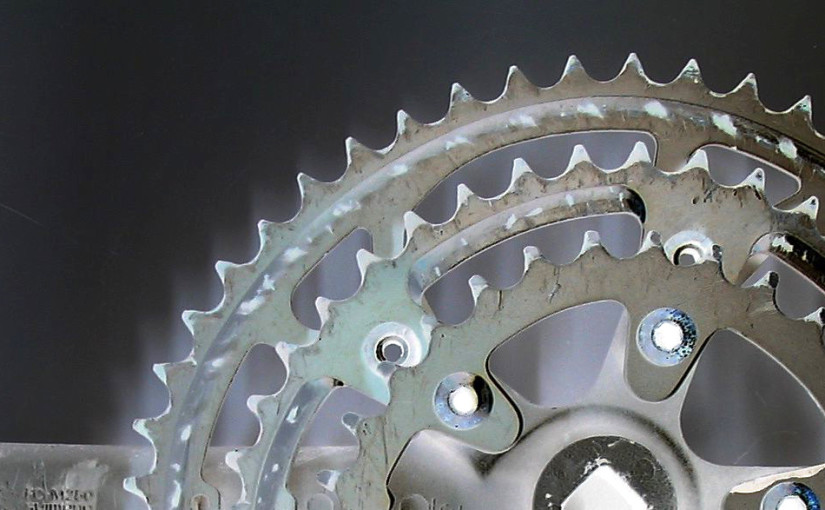One day my trusted shop for bicycle parts ( bike-components.de ) had a banner on their site about oval chainrings and that woke my engineering curiosity:
what is this? why? science??
I started searching for information and soon discovered that there were multiple cooks in the mix and that oval chainrings could be the next thing in mountainbiking …or maybe just another gimmic?
The current ovals must not be confused with the Shimano Biopace from the 80s as the design principle is completely different (or at least 90 degrees 😉 ).
Biopace was designed to save your knees by slowing the cadence down on top and bottom dead center (TDC and BDC), which are the positions where the knee joint changes direction, i.e. begins to compress or open. This was achieved by increasing the chainring diameter on those points, thus requiring more effort and slowing the rotation.
Other aspect is that the chainring diameter was smaller on the power phase (cranks about vertical) thus enabling the cyclist to generate more speed and momentum to go through the TDC / BDC
More on Biopace: Sheldon Brown and Wikipedia

The current ovals are clocked opposite to the Biopace: The chainring size is smallest near TDC (or BDC as the ring is symmetric due to two cranks in opposite directions). The theory is to have smallest moment (minor axis) when the leg is at the weakest and biggest moment (major axis) when the leg has the most power. This enables the rear wheel to have constant torque thus maintaining the traction.
Q-Rings boost your performance by varying drivetrain resistance during pedaling in line with your legs natural strengths and weakness. They make better use of the strongest muscle groups (increasing positive work) and compensate for the weaker zones in the pedaling stroke (reducing negative work).
– Rotor about Q-rings
More on the ovals can be read from mtbr.com, absolute black, rotor, doval etc.
After learning the basic theory behind the oval chainrings I started to pay attention to the promised enhancements of ovals, or deficiencies in my current setup.
Are round chainrings really that far away from optimal?
When taking the possible enhancements into consideration, it is easy to notice the pulsating output when climbing on round chainrings. Possible issues are that technical climb ends in stalling or in lost of traction.
Think about these on your next ride:
- Ride a steep climb or with a too large gear and you will notice the lost of power on TDC and then a surge after getting over the TDC or just stalling on TDC thus needing to dismount and walk the rest of the climb.
- Another good example is climbing on some surface that has lower friction (wet, slippery, etc.) and you’ll notice that the wheel tends to slip on the power surges.
Now that I had noticed some possible deficiencies on round chainrings, I was eager to test the oval ones but had the problem having to choose from multiple manufacturers.
More posts on Ovals:
